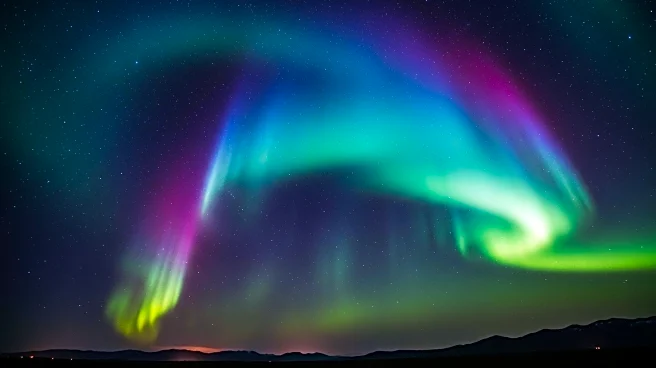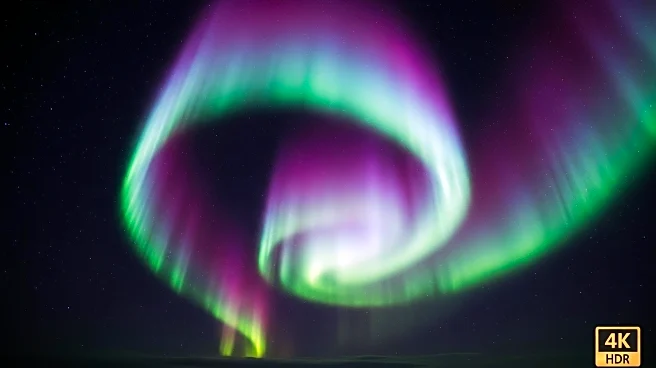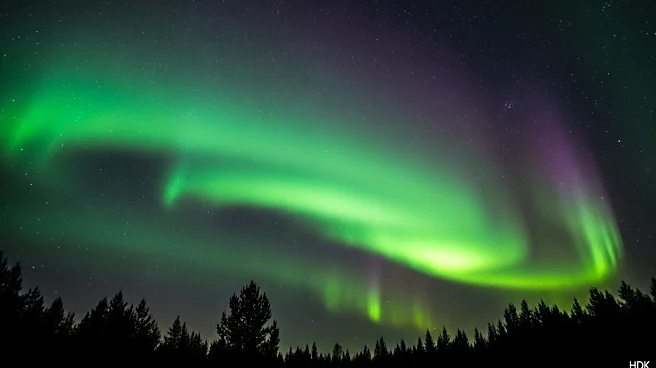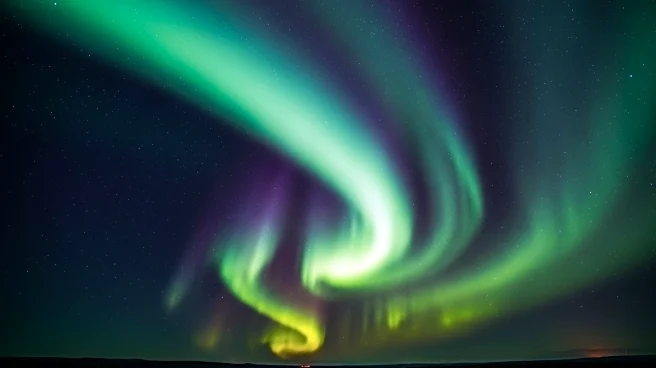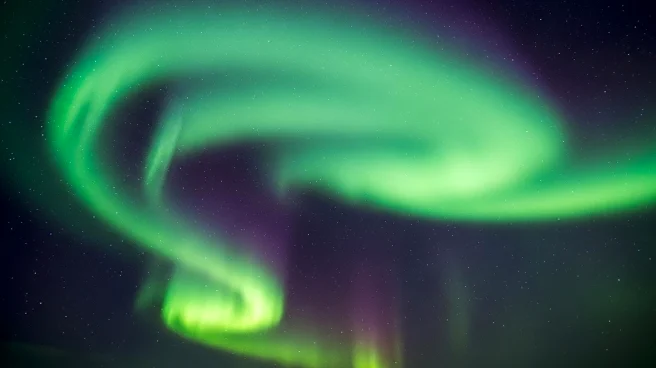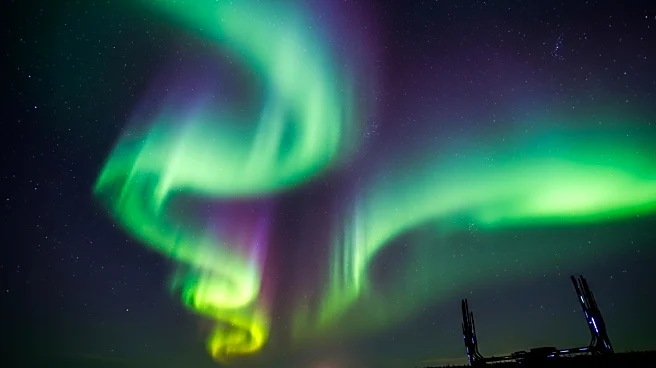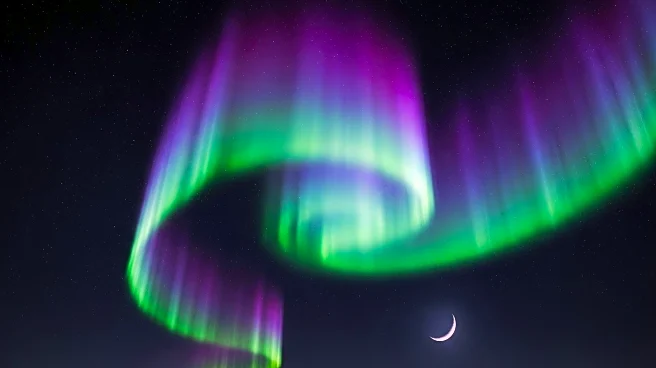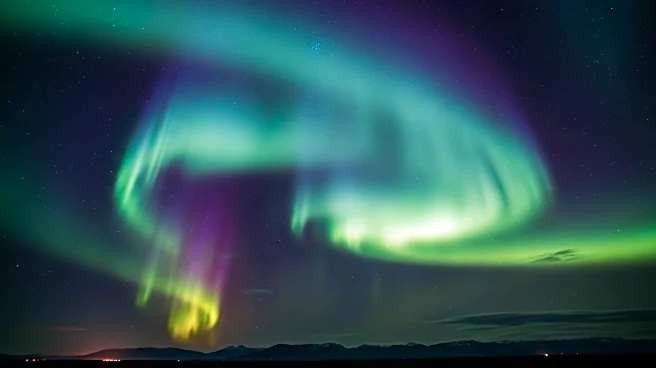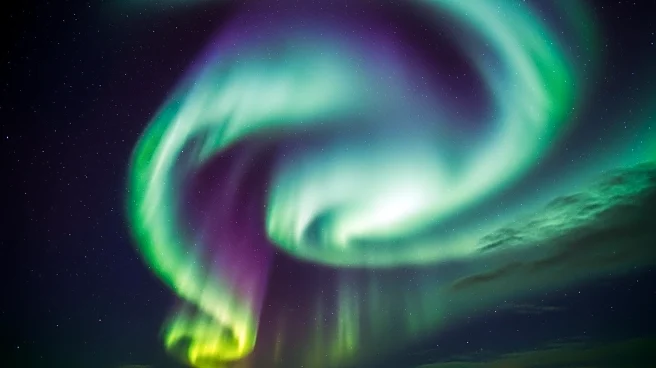What's Happening?
The Aurora Borealis, commonly known as the Northern Lights, is expected to become more intense over the next two years due to the sun's 'last gasp' finale. Solar activity follows an 11-year cycle, peaking at the solar maximum before declining to a solar minimum. As the sun approaches the end of its latest solar maximum, cooler regions known as coronal holes become more common, releasing high-speed solar wind that enhances the Northern Lights. Space weather physicist Tamitha Skov predicts that the sun's 'last gasp' will occur within the next two years, potentially leading to more frequent and intense geomagnetic storms.
Why It's Important?
The intensification of the Northern Lights presents opportunities for scientific study and public engagement with space phenomena. Increased solar activity can lead to more visible and widespread auroral displays, attracting interest from both researchers and the general public. Understanding the dynamics of solar cycles and their impact on Earth's atmosphere is crucial for predicting space weather and mitigating potential disruptions to communication and navigation systems. The phenomenon also highlights the interconnectedness of solar and terrestrial processes.
What's Next?
Scientists will continue monitoring solar activity and its effects on the Northern Lights, with the potential for more frequent geomagnetic storms. Research into solar cycles and their impact on Earth's atmosphere will be ongoing, providing insights into space weather prediction and management. Public interest in the Northern Lights may lead to increased tourism and educational initiatives focused on space phenomena.
Beyond the Headlines
The study of solar cycles and their impact on Earth's atmosphere raises questions about the long-term effects of space weather on technology and infrastructure. Understanding these processes could have broader implications for climate science and the study of Earth's environment. The phenomenon also underscores the importance of international collaboration in space research.

